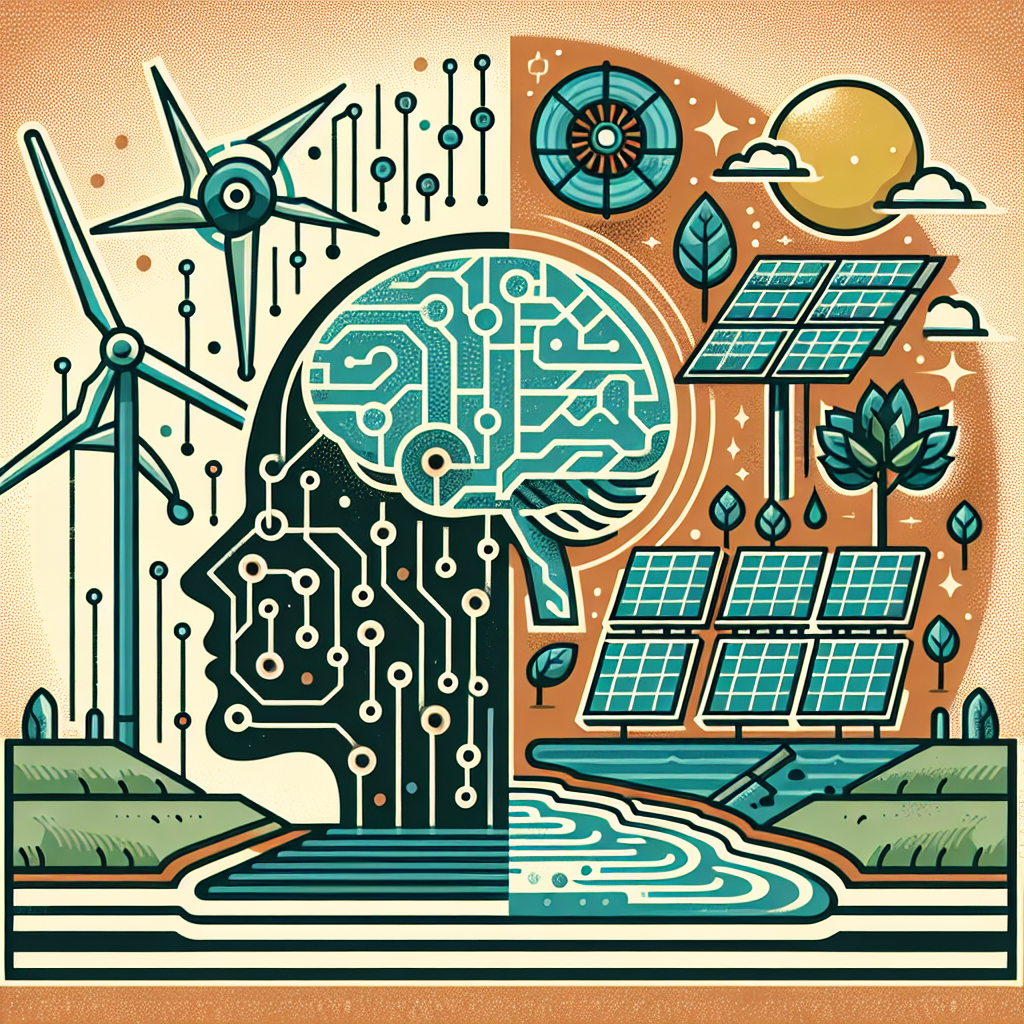Artificial Intelligence (AI) has been transforming various industries by improving efficiency, accuracy, and decision-making processes. One area where AI is making a significant impact is in the renewable energy sector. By integrating AI technologies with renewable energy sources, we can optimize energy production, reduce costs, and increase sustainability. In this article, we will explore the various ways in which AI is being integrated with renewable energy sources and the implications of this integration for the future of energy production.
AI Integration in Renewable Energy:
1. Predictive Maintenance: AI algorithms can analyze data from sensors and monitoring systems to predict when equipment in renewable energy plants needs maintenance. By identifying potential issues before they occur, AI can help prevent costly downtime and ensure that renewable energy sources are operating at peak efficiency.
2. Energy Forecasting: AI can analyze weather patterns, historical data, and other variables to predict energy production from renewable sources such as solar and wind power. By accurately predicting energy output, grid operators can better manage the integration of renewable energy into the grid and reduce the reliance on fossil fuels.
3. Smart Grids: AI technologies can optimize the operation of smart grids by balancing supply and demand, managing energy storage, and integrating renewable energy sources into the grid. By dynamically adjusting energy production and consumption based on real-time data, AI can help reduce energy waste and improve grid reliability.
4. Energy Trading: AI-powered algorithms can optimize energy trading by analyzing market trends, pricing data, and other factors to maximize profits for renewable energy producers. By automatically adjusting energy trading strategies based on real-time data, AI can help renewable energy producers maximize revenue and compete more effectively in the energy market.
5. Resource Management: AI can optimize the use of resources in renewable energy plants by analyzing data on energy production, weather conditions, and equipment performance. By dynamically adjusting resource allocation based on real-time data, AI can help improve efficiency and reduce costs in renewable energy production.
Implications of AI Integration on Renewable Energy:
1. Increased Efficiency: By optimizing energy production, maintenance schedules, and resource management, AI can help renewable energy sources operate more efficiently and reduce costs. This increased efficiency can make renewable energy more competitive with traditional energy sources and accelerate the transition to a sustainable energy system.
2. Grid Stability: AI technologies can help improve grid stability by balancing supply and demand, managing energy storage, and integrating renewable energy sources into the grid. By optimizing grid operations, AI can help reduce the risk of blackouts and ensure a reliable energy supply for consumers.
3. Environmental Impact: By increasing the efficiency and reliability of renewable energy sources, AI integration can help reduce the environmental impact of energy production. By reducing the reliance on fossil fuels and minimizing energy waste, AI can help lower greenhouse gas emissions and mitigate the effects of climate change.
4. Economic Benefits: AI integration in renewable energy can create new opportunities for innovation, job creation, and economic growth. By optimizing energy production, trading, and resource management, AI can help renewable energy producers maximize revenue and compete more effectively in the energy market.
5. Policy Implications: AI integration in renewable energy raises important policy questions related to data privacy, cybersecurity, and energy market regulation. Governments and regulators will need to develop policies and regulations to ensure the responsible use of AI technologies in the energy sector and protect consumers and the environment.
FAQs:
1. How is AI being used in solar energy production?
AI is being used in solar energy production to optimize energy forecasting, predictive maintenance, resource management, and grid integration. By analyzing data from sensors and monitoring systems, AI can help solar energy producers maximize energy production, reduce costs, and improve grid stability.
2. What are the benefits of AI integration in wind energy production?
AI integration in wind energy production can help optimize energy forecasting, maintenance schedules, resource management, and grid operations. By analyzing data on wind patterns, equipment performance, and energy production, AI can help wind energy producers increase efficiency, reduce downtime, and improve grid reliability.
3. How can AI help improve the efficiency of renewable energy sources?
AI can help improve the efficiency of renewable energy sources by optimizing energy production, maintenance schedules, resource management, and grid operations. By analyzing data in real-time and adjusting operations dynamically, AI can help renewable energy sources operate more efficiently and reduce costs.
4. What are the challenges of integrating AI with renewable energy sources?
Some challenges of integrating AI with renewable energy sources include data privacy concerns, cybersecurity risks, and regulatory uncertainties. Governments, regulators, and industry stakeholders will need to address these challenges to ensure the responsible use of AI technologies in the energy sector.
5. What is the future of AI integration in renewable energy?
The future of AI integration in renewable energy is promising, with opportunities for innovation, job creation, and economic growth. By optimizing energy production, maintenance schedules, resource management, and grid operations, AI can help accelerate the transition to a sustainable energy system and reduce the environmental impact of energy production.

